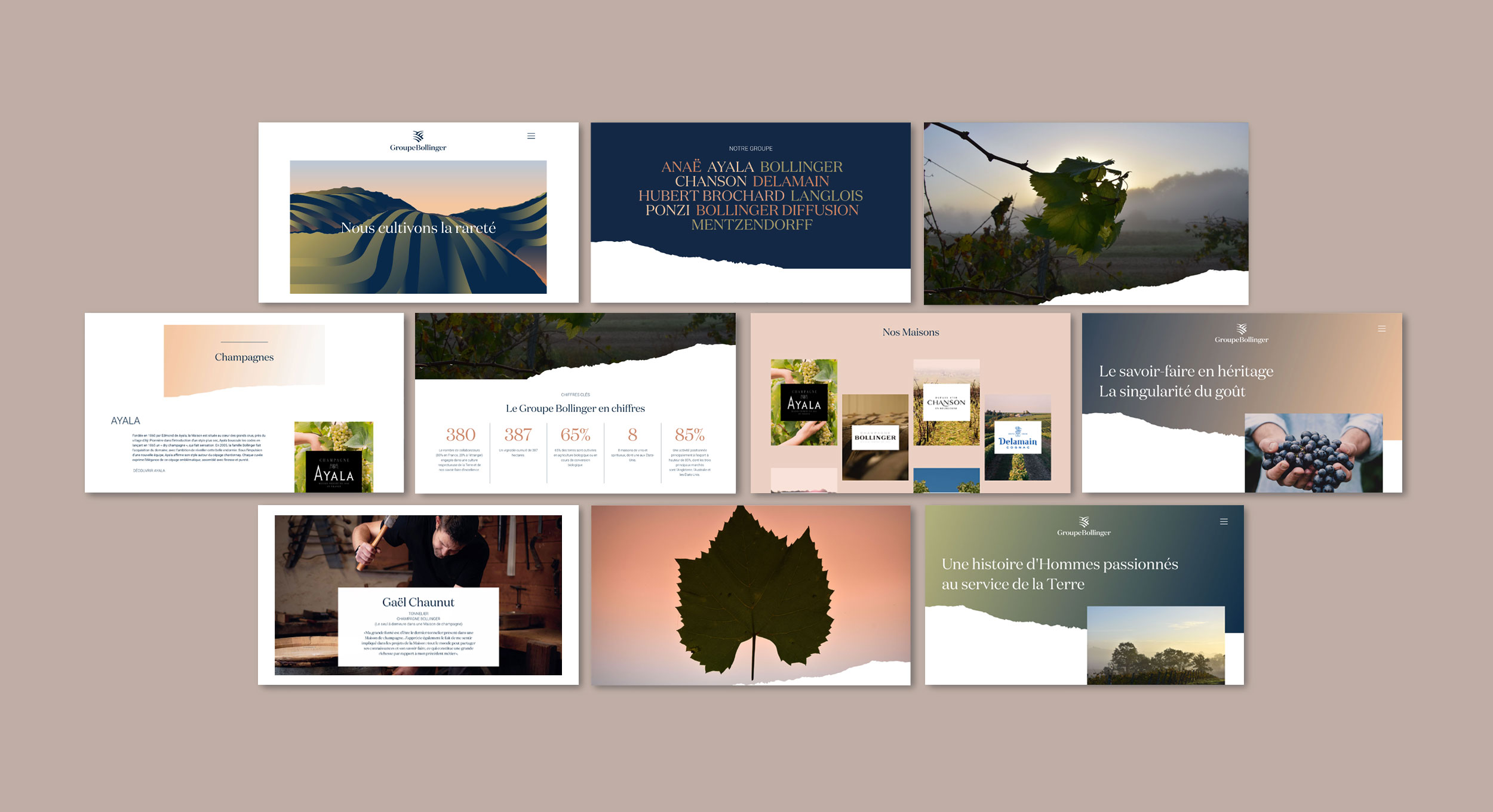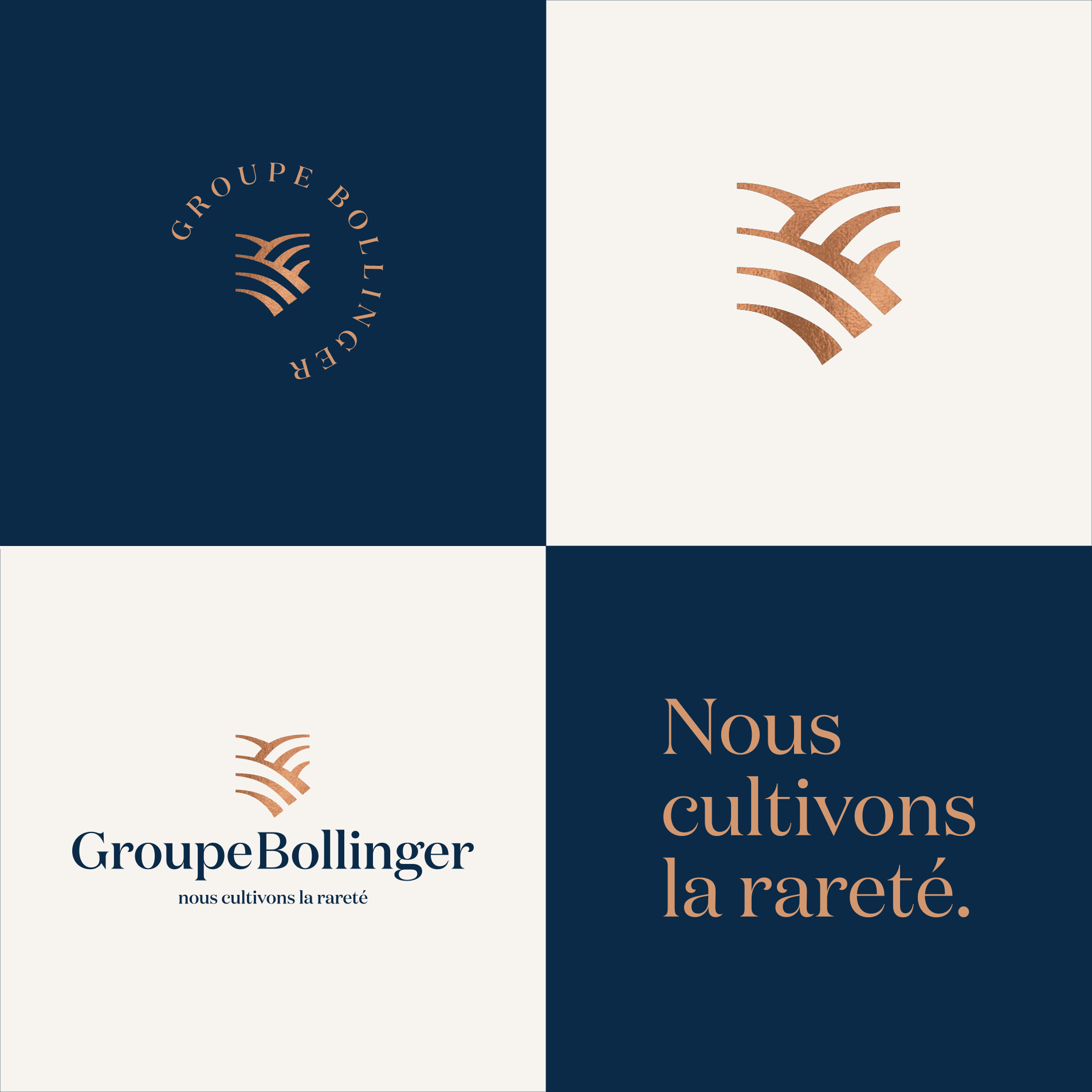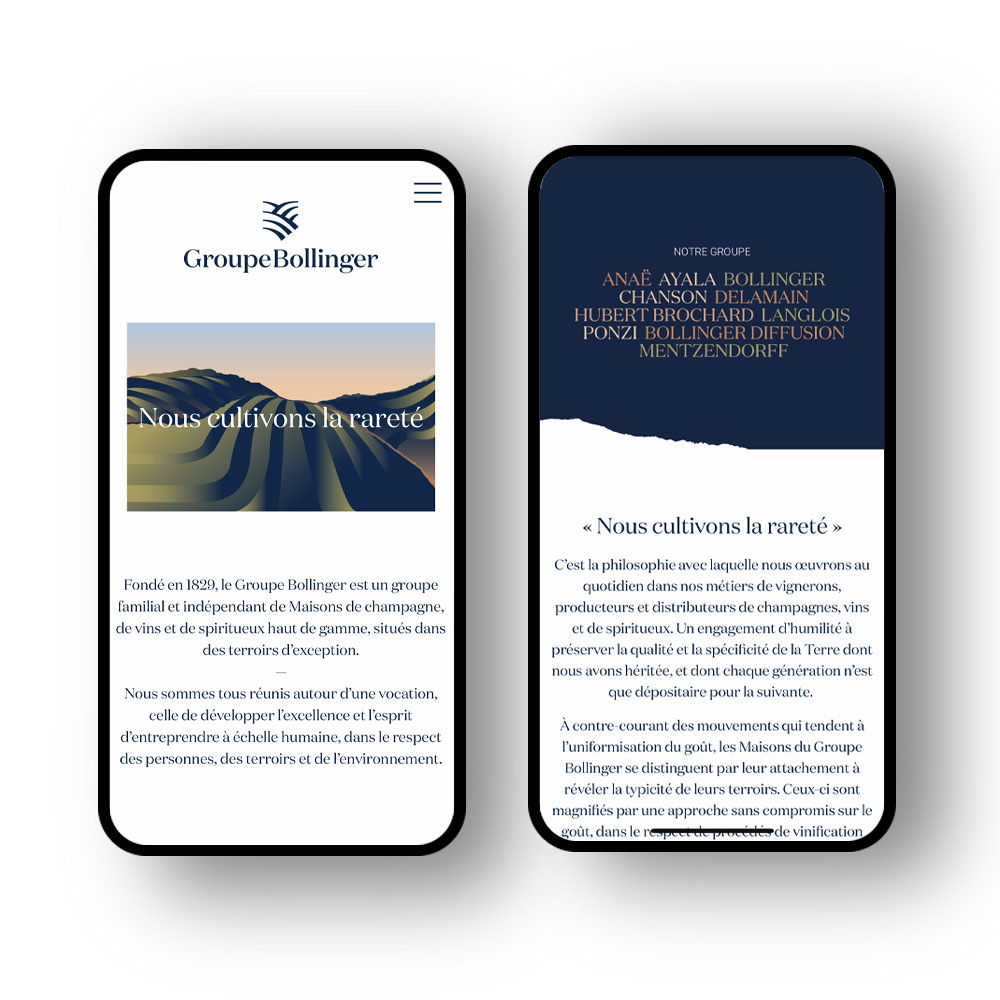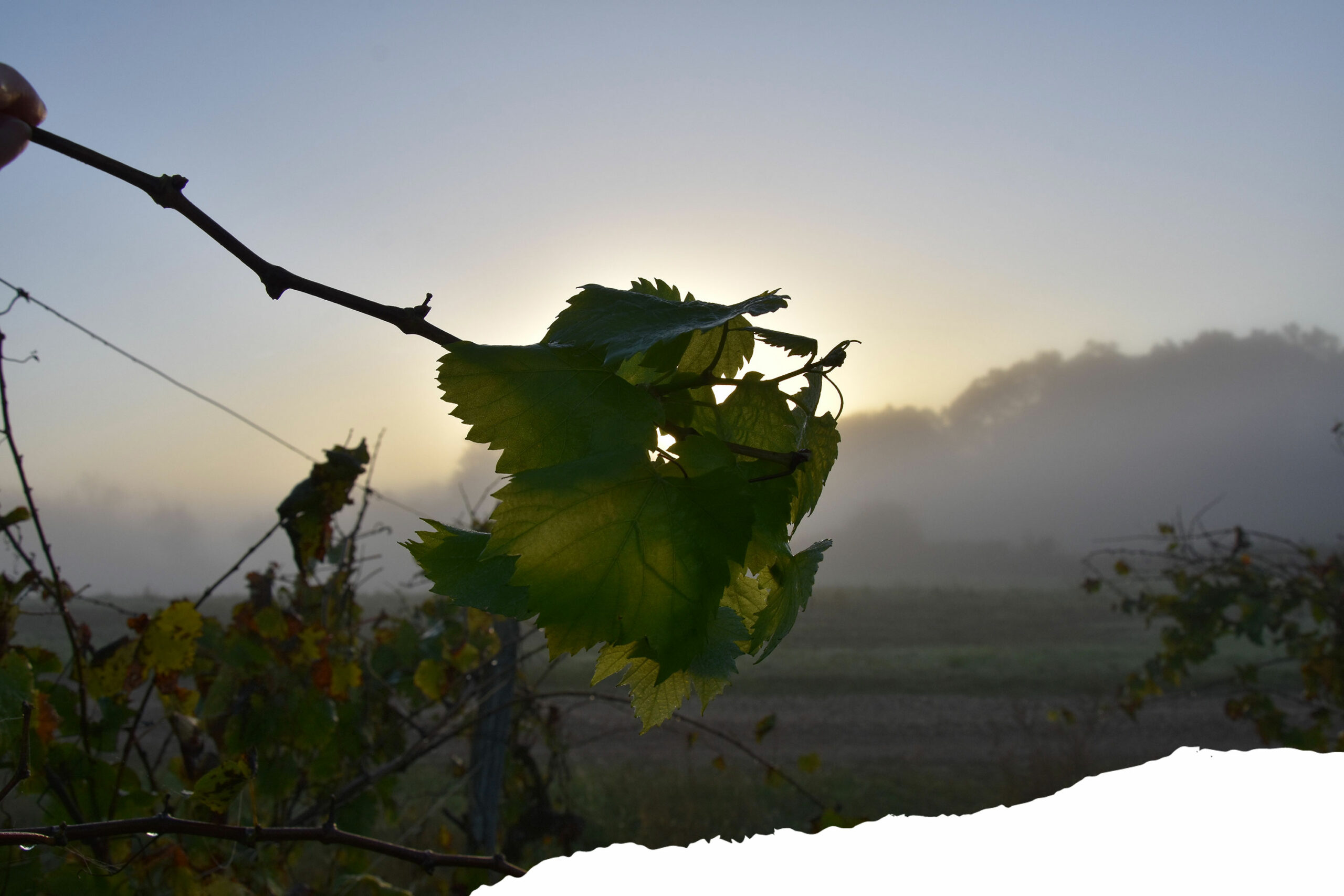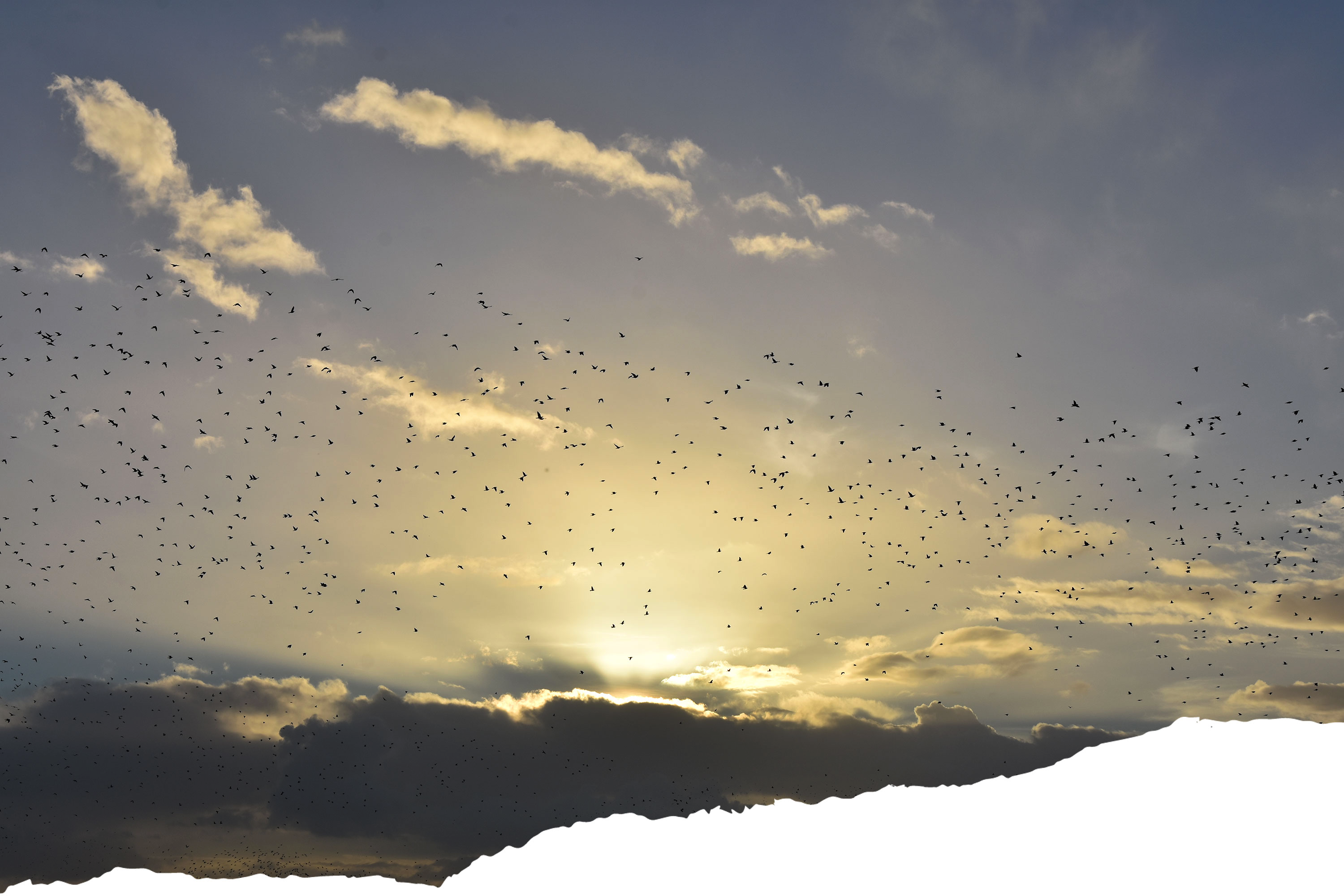Emma Brante,
Creative Director, Graphic Designer
Founder, Partner
Let us tell you a story… The story of our collaboration with the Bollinger group, created in 1829 by the Bollinger champagne House. Between family transmission and cultural heritage, we invite you to discover the backstage of the creation of the brand identity and new corporate website that we imagined for this exceptional group.
What was the starting point of the project for the Bollinger Group?
The starting point was a brief. A brief is a magic box, a mix of « everything is possible » + « beware, you can’t just create anything you want that looks beautiful 🙂 ».
The group had been existing for decades and it was until now a discrete financial holding. As the group was becoming more important, welcoming new Houses, questions appeared internally as well as the desire to exist publicly as a group. Our mission was to create the public image they needed without overshadowing the brands. A visual and editorial line to express their values, the reputation and aura of their brands.
In phase one of our work, we built the identity language of the group: its name, its logo, its slogan and a universe. We continued this work in the same spirit in order to deploy and implement the new vision and identity of the group.
What were your inspirations for the new corporate identity of this independent family-owned group?
A group is the voice of a culture. For the Bollinger Group, we wanted something soft and inspiring – and therefore human – as opposed to a cold financial institutional image. Something that is close to nature.
What was the logo design process?
The lines drawn by the cultivated fields, so typical of the vineyards. This was the starting point. This landscape is one of the first images one has in mind when imagining vineyards. The second idea was to find a symbol to represent the historical dimension of these Houses. A character of nobility and belonging. The shape of the logo refers to a shield. And the last idea was to signify the concept of land in the sense of an estate, a property.
This logo is the final association of this landscape in the shape of a blazon.
“Cultivating the Rare”: how does this baseline represent the vision and history of the Bollinger Group?
The group had a baseline which was « Families of rare wines ». Having integrated new spirits brands, this phrase no longer represented them. The heart of it was the word « Rare ». And then, associated to the idea of a « culture » and playing on the multiple meaning of this word that carries many rich ideas such as: the idea of an identity, the patrimonies and the cultivation of the land, we created that baseline « Cultivating Rarity ».
This slogan also has an ecological dimension and evokes a respect for the Earth
How did the Bollinger Group website come to life to look like it does today?
A group is not a brand, it’s an institution. As for any serious major institution, the visual grammar must be rich and creative in order to convey a sovereign image. The website revolves around the idea of landscapes and the richness of the land. We created graphic landscapes and designed colored hills with ripped paper.
What were the challenges in developing this corporate website?
This website is a flag in the colors of the group’s ambitions and the “extra-ordinary” quality of its Houses.The website allows the Bollinger Group to present itself and address thousands of people at the same time and not just to isolated interlocutors.
Its goal is to shows the foundations of a serious institution and it indirectly generates interest among the Houses. It highlights the brands and entities and can arouse curiosity. The Group’s website makes it possible to say everything that the brands cannot always express.
A photographic coverage was done to illustrate the Bollinger Group corporate website. How would you define the artistic direction of this shooting?
We built the entire identity around landscapes. We had created graphic forms that evoked landscapes playing with colored gradients. The render was a very soft visual feeling.
We shot a series of different landscapes, fields of vineyards. The photos were taken at dawn, bringing to us a mysterious rich light and revealing the magic that only nature can provide.
Each photo is a piece of this nature that carries universal ideas. Swarms of birds, mist invading vineyards, sun rising in the hills, the humidity of the night on the vine leaves. We wanted to recreate the feeling of the scent that the earth has when it is filled with the humidity of the night.
Tell us about the research process to define the iconographic identity of the group?
We have created a series of visuals specific to the group that cannot be confused with those of the brands. The purpose of these images is to give a sense of height and symbolize the group’s unifying role.
Brands mainly broadcast and show product images, we never show products. We have shifted the focus. We talk about the Earth.
How does Frontline establish a brand identity through photography?
It is part of a whole. When we start a project, first we look for a general feeling. It often comes from a first image that we find or that we have in mind. This image evokes a style. From this style we develop a whole visual grammar – graphic, photographic, editorial – that will dress the brand and give it the means to express itself in public.
